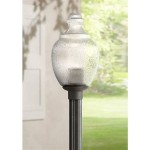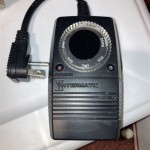How To Seal Acrylic Paint On Wood For Outdoors
Acrylic paint is a versatile and popular medium for artists and crafters, prized for its vibrant colors, quick drying time, and water-based nature. When applied to wood, acrylic paint can create stunning decorative pieces, outdoor signs, and personalized furniture. However, when these painted wood projects are intended for outdoor use, they are vulnerable to the elements. Factors such as sun exposure, rain, humidity, and temperature fluctuations can deteriorate the paint, causing it to fade, crack, peel, or even mold. Therefore, sealing acrylic paint on wood is crucial to protect the artwork and extend its lifespan in an outdoor environment. This article provides a comprehensive guide on how to effectively seal acrylic paint on wood for outdoor applications, ensuring longevity and preserving the aesthetic appeal of the project.
Understanding the Importance of Sealing
Sealing acrylic paint on wood is not merely an aesthetic consideration; it is a necessary step to protect the painted surface from a range of environmental hazards. Unsealed acrylic paint is porous, meaning it is susceptible to absorbing moisture. This moisture can seep into the wood, leading to warping, rot, and ultimately, the disintegration of the wood. Furthermore, ultraviolet (UV) radiation from the sun can break down the chemical bonds in the acrylic paint, causing colors to fade and the paint film to become brittle. Temperature fluctuations can also cause the paint to expand and contract at different rates than the wood, leading to cracks and peeling. Sealing the painted wood creates a protective barrier against these elements, safeguarding the artwork and ensuring that it remains vibrant and structurally sound for years to come.
The choice of sealant is also important. Not all sealants are created equal, and selecting the appropriate sealant for outdoor use is paramount. Sealants formulated for indoor use may not offer adequate protection against UV radiation or moisture. Therefore, it is essential to choose a sealant specifically designed for outdoor applications. These sealants typically contain UV inhibitors and are formulated to be waterproof and resistant to temperature fluctuations. Ignoring this step can render the sealing process ineffective, leaving the painted wood vulnerable to damage.
Beyond protecting the paint and wood from the elements, sealing also provides a durable surface that is easier to clean. Outdoor wood projects can accumulate dirt, dust, and grime over time. A sealed surface makes it easier to wipe away these contaminants, preventing them from embedding in the paint and preserving the artwork's original appearance. This ease of maintenance ensures that the project remains visually appealing with minimal effort.
Preparing the Wood and Painted Surface
Proper preparation is essential for achieving a durable and long-lasting seal. The quality of the sealant application is directly influenced by the condition of the wood and the painted surface. Neglecting proper preparation can result in a compromised seal, leading to premature failure and damage to the artwork.
The first step is to thoroughly clean the wood surface. Remove any dirt, dust, grease, or loose particles. This can be accomplished using a damp cloth, a mild detergent solution, or a brush. For heavily soiled wood, a pressure washer can be used, but caution should be exercised to avoid damaging the wood. Allow the wood to dry completely before proceeding to the next step. Any moisture trapped in the wood can interfere with the adhesion of the sealant, leading to peeling and cracking.
Next, inspect the wood for any imperfections, such as splinters, rough patches, or knots. Sand the wood to create a smooth and even surface. Use progressively finer grits of sandpaper, starting with a coarse grit to remove any major imperfections and finishing with a fine grit to create a smooth surface. Sanding not only improves the appearance of the finished project but also enhances the adhesion of the paint and sealant. After sanding, remove any sanding dust with a tack cloth or a vacuum cleaner.
Before applying the acrylic paint, it is recommended to prime the wood surface. Primer creates a uniform surface that promotes better adhesion of the paint and helps to prevent the paint from being absorbed into the wood. Choose a primer specifically designed for acrylic paints and wood. Apply the primer according to the manufacturer's instructions, allowing it to dry completely before proceeding to the painting stage. Apply the acrylic paint in thin, even coats, allowing each coat to dry completely before applying the next. Avoid applying thick coats of paint, as this can lead to cracking and peeling. Once the paint is completely dry and cured, the surface is ready for sealing.
Before sealing, ensure that the painted surface is clean and free of any dust or debris. Use a soft brush or a tack cloth to remove any particles. Inspect the paint for any imperfections, such as drips or runs. These imperfections should be corrected before sealing to ensure a smooth and even finish. Proper preparation is the foundation for a successful and durable seal, protecting the artwork and extending its lifespan in the outdoor environment.
Choosing the Right Sealant and Application Techniques
Selecting the right sealant and employing proper application techniques are critical for achieving a durable and protective finish. The choice of sealant depends on various factors, including the type of wood, the type of paint, the intended use of the project, and the desired finish. Understanding the properties of different sealants and mastering the application techniques will ensure that the painted wood is adequately protected from the elements.
Several types of sealants are suitable for sealing acrylic paint on wood for outdoor use, each with its own advantages and disadvantages. Polyurethane sealants are a popular choice due to their durability, water resistance, and UV protection. They are available in both water-based and oil-based formulations. Water-based polyurethanes are generally easier to apply and clean up, while oil-based polyurethanes offer greater durability and water resistance. Spar urethane is another excellent option, specifically designed for marine applications. It offers superior protection against water, UV radiation, and temperature fluctuations, making it ideal for outdoor projects that are exposed to harsh conditions.
Acrylic sealants are also available, offering good UV resistance and flexibility. They are typically water-based and easy to apply. However, they may not be as durable or water-resistant as polyurethane or spar urethane sealants. Varnish is another option, providing a durable and glossy finish. However, some varnishes may yellow over time, especially when exposed to sunlight. Before selecting a sealant, it is essential to read the product label carefully and consider the specific requirements of the project. Look for sealants that are labeled as "exterior," "UV resistant," and "waterproof."
When applying the sealant, it is important to follow the manufacturer's instructions carefully. Apply the sealant in thin, even coats, using a high-quality brush, roller, or sprayer. Avoid applying thick coats, as this can lead to drips, runs, and uneven drying. Allow each coat to dry completely before applying the next. Multiple thin coats are always better than one thick coat. Sand lightly between coats with fine-grit sandpaper to create a smooth and even surface. This will also improve the adhesion of subsequent coats.
When using a brush, choose a brush specifically designed for the type of sealant being used. Use long, even strokes, overlapping each stroke slightly to ensure complete coverage. When using a roller, choose a roller with a nap appropriate for the surface being sealed. Use a gentle, even pressure, avoiding excessive rolling, which can create bubbles. When using a sprayer, follow the manufacturer's instructions regarding spray pressure and nozzle settings. Apply the sealant in a consistent pattern, overlapping each pass slightly. Always work in a well-ventilated area and wear appropriate safety gear, such as gloves and a respirator. Proper application techniques will ensure that the sealant provides maximum protection and a beautiful finish.

How To Seal Acrylic Paint On Wood Learn About Sealing Paints

How To Seal Acrylic Paint On Wood Exploring Sealers

How To Seal Acrylic Paint On Wood Learn About Sealing Paints

How To Seal Acrylic Paint On Wood Exploring Sealers

How To Seal Acrylic Paint On Wood Best Clear Sealants

How To Seal Painted Wood For Outdoor Use 7 Easy Steps

How To Seal Acrylic Paint On Wood Diffe Sealers

How To Seal Acrylic Paint On Wood Exploring Sealers

How To Seal An Acrylic Painting Step By

How To Seal Acrylic Paint On Wood 3 Mistakes Avoid
Related Posts







